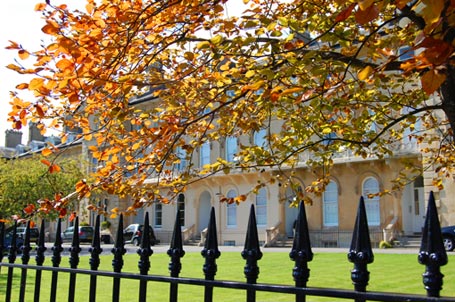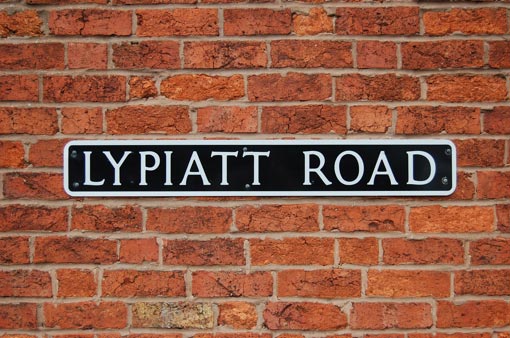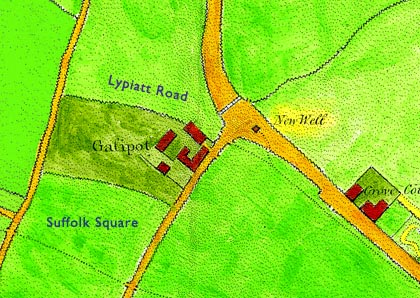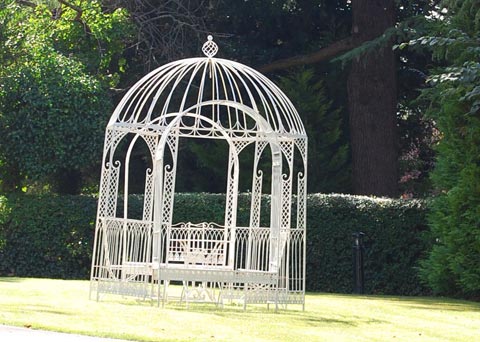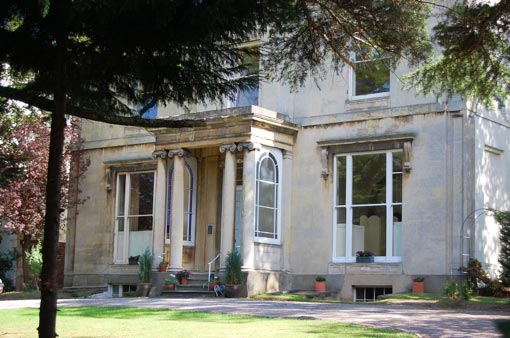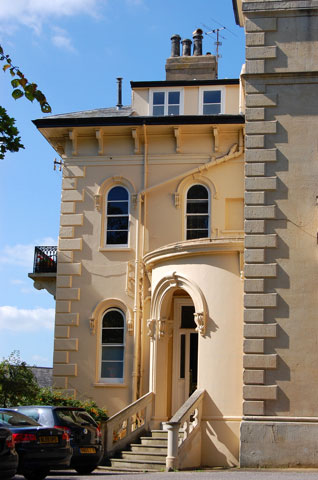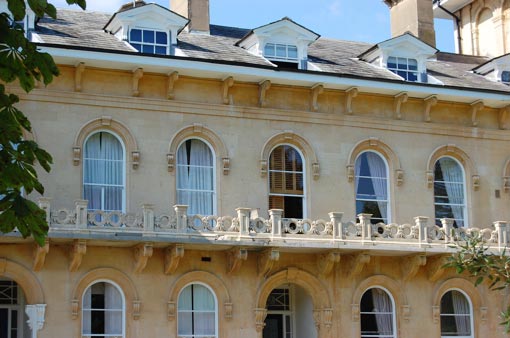I often get funny looks when I’m out taking photographs for this site but never so many as when I’m grabbing a snap of some pavement ironwork. Which is a shame really, because people miss so much by not looking at what’s under their feet.
Coalplates are a case in point. They are a relic of a time when coal was a crucial household commodity and its efficient supply was an important matter. In working class areas people often had to collect it themselves, and so there were establishments like the Elephant & Castle which once stood in Tewkesbury Road – a dual purpose tavern and coal merchant. For the middle classes and up, it was easier – the coalman would bring sacks of it straight to your door with a horse and cart. In urban streets, particularly terraces where there was no access to the back of the property except through the house, a coal cellar at the front of the house was the obvious solution. Instead of having the nasty dirty coalman traipse through your house leaving black dust everywhere, he could simply open a hatch in the path outside and empty the sacks straight into the cellar. These hatches are known as coalholes, typically a circular hole of 12 or 14 inches diameter and covered by an iron plate.
This arrangement was not without its hazards. For one thing, people used to fall down them. Victorian local newspapers all over the country abound with stories of deaths and broken limbs caused by open or poorly secured coalholes. You wouldn’t want to be standing in the cellar underneath on delivery day either and have a hundredweight of coal dropped on your head. Surprisingly, there is less mention of the hernias and back problems which the coalman must have suffered as he lumped these heavy iron plates on and off. They also created an issue with security – an unlocked coalplate was an easy way for a moderately slim burglar to get into the house. So all in all it wasn’t the ideal solution, and by the middle of the 20th century coalholes were pretty much a thing of the past.
And as they’ve fallen out of use they’ve become scarce. Many have been concreted or paved over and they are now uncommon enough that spotting them can be a fun hobby (for people like me, anyway).
Coalplates are not always easy to distinguish from manhole covers and other inspection hatches, but they are typically found close to houses either in garden paths or in the pavement outside, and they are somewhat smaller – generally either 12″ or 14″. The plate is usually set into an outer metal ring cemented into the path. They can be beautifully decorated with geometric patterns, although larger cities seem to be the best place to look for the really ornate ones … most of the ones I find in Cheltenham have quite simple designs.

Keynsham Street. A typical simple coalplate design
There are several reasons why coalplates are usually circular. The main reason is that – unlike a square or rectangular plate – it’s not possible for a round plate to accidentally fall down the hole. They also have no corners to get broken off or cause injury, and they are much easier to handle because they can be rolled on and off. The patterns on the surface are also functional, because a smooth iron plate would be dangerously slippery. Whether it’s an ornate pattern or just a series of raised studs, the surface of a coalplate is thoughtfully designed to prevent the hapless pedestrian going arse over tip in wet weather.
Coalplates would have been available from any local ironmonger, some of whom may have had the facilities to make their own. Alternatively they would be made in the large commercial foundries of London and the Midlands and cast to a standardised design, sometimes personalised with an individual ironmonger’s “badge”. Cheltenham had a couple of quite large foundries during the 19th century, so it’s very possible that some of these coalplates were cast locally.

St Luke’s Place. I couldn’t get a direct overhead shot of this one because it was up somebody’s garden path and – well, you know. Again it’s a very simple design with a mixture of raised studs and punched out holes in quite a thin plate, and may well have been made by a local ironmonger. It doesn’t look like there’s anything underneath this one, and it has no outer ring either, so it may have been moved from its original location or sealed up.
–

Suffolk Square. A beautifully preserved example of a commercial patented coalplate, the Hayward’s D 14″. It’s not as old as the house it serves … this section of street was built in the 1820s whereas this type of coalplate first hit the streets in the 1880s, and you can see how it has been artistically cemented into a hole in the original Regency period flagstone pavement. The Patent Self-Locking Plate was part of a movement towards more high-tech coalplates with increased safety and security. The underside of this type of plate was fitted with a pair of sliding bolts, specially weighted so that they would shoot outwards when the plate is dropped, locking it into the hole so that it could then only be unlocked from underneath. The idea was to prevent accidents with unfastened plates and also to thwart burglars and intruders.
–

Imperial Lane. Another Hayward’s D 14″. Hayward Brothers were a major London foundry whose works are pretty ubiquitous across the nation. They evolved from a family firm of glass-cutters who branched out into ironmongery in 1848 and became the market leader throughout the 19th and early 20th centuries in street fittings such as coalholes and lightwells. They ceased trading in the 1970s, but their designs are still widely trod on Britain’s streets.
–

Cambray Place. Right in the middle of Cheltenham’s busy shopping area and never noticed by most of the people who stride over it on a daily basis (judging by the withering looks I got when I stopped to photograph it) is another patented self-locking design by Hayward’s, probably a later model. This one is right outside the NatWest bank, though I don’t suppose they use a lot of coal in there these days.
–
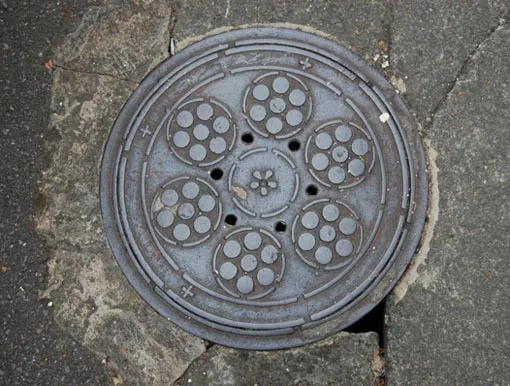
Keynsham Street. One of two surviving coalplates set into the pavement in Keynsham Street. The 1830s terraced houses here front directly onto the street and have no front gardens, but they do have basements and coal cellars underneath the pavement. This one is unusually decorative for a Cheltenham plate. It has no foundry mark or identification on it, though it has a space around the rim which looks like it is intended for a name. It was quite common for the large foundries to make coalplates for individual ironmongers in runs of 200 or so, cast to a standard design but personalised with the ironmonger’s own name. In this case there is no name, but it is probably one of these semi-massproduced designs. This particular design is very close to one produced by Hayward Brothers, which suggests either that it was made by Hayward’s or that somebody else nicked their design and cast their own anonymous version. Variations on the pattern of circles within circles is actually quite a common design on coalplates, but it’s much more usual to see them with groups of four circles or five circles rather than the six (seven including the central one) shown here. Small ventilation holes are also included. The presence of a surviving coal cellar underneath is evidenced through the ominous crack in the pavement.
–
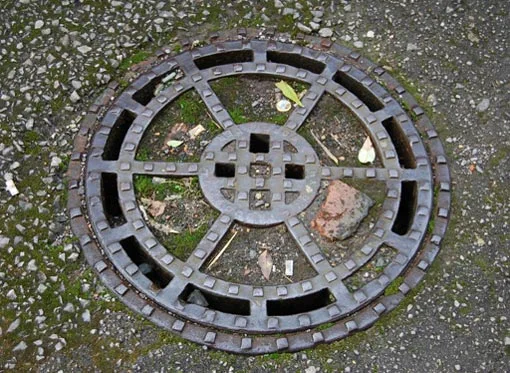
Passage off St James’s Square. I’m not entirely sure if this is a coalplate or some other kind of inspection cover, but it earns its place here for its semi-local connection. It’s a simple but quite pleasant design incorporating ventilation slots and inset concrete panels. Barely visible in the worn down surface of its inner ring is the name of the foundry: Hardy & Padmore, Worcester (shown upside-down in this shot). This firm was founded in 1814 by Scottish brothers Robert and John Hardy, who went into partnership in 1829 with Richard Padmore and became specialists in tram rails, amongst other street furniture. The foundry was based in Worcester and survived up until 1967.
–
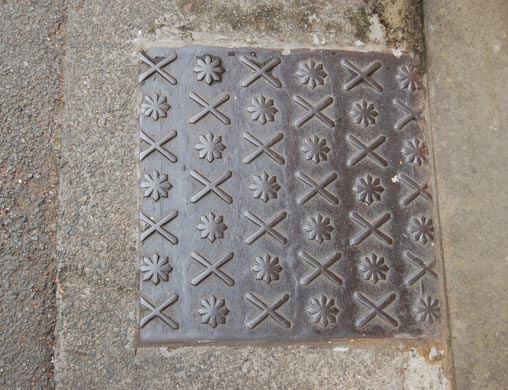
Rosehill Street. Coalplates are not always circular. This example of a square one is just one of a great many outside the c.1890s terraced houses of Rosehill Street. The uniformity of most of them suggests they are the original ones placed there when the houses were built, but this particular one is of a different design from the rest. It looks as though the pattern has been cast onto a sheet of iron which has been cut to size afterwards.
–

Berkeley Place. This is quite probably the oldest Cheltenham coalplate I’ve found so far, and also the largest. There’s nothing in this photo to give it a sense of scale but it was so large that I initially thought it was a manhole cover. It is also set quite some distance away from the house, right at the front of the pavement by the kerb. It was only when I noticed that all five houses in the easterly section of Berkeley Place have an identical plate in the same position that I realised what they were – and also that they must be the original ones dating back to the building of this terrace in 1819. They have done well to survive – they are now set into a modern tarmac pavement and the houses on the western side seem to have lost theirs. Berkeley Place is among the earliest and grandest of Cheltenham’s Regency terraces and I can only assume that the houses were built with large cellars extending some way in front of them, with the coal cellar underneath the pavement. What is interesting about this one (and its companions) is that it looks much more ‘crafted’ than other coalplates. The outer ring is much wider and the surface of the plate has a distinctly hand-beaten look to it. I was also intrigued by the studs on the surface, which are all slightly different in size and shape. If you look carefully you can see that one is missing and has left behind a tiny hole … indicating that these studs were not cast as part of the plate but hammered on afterwards by hand. I reckon these plates were not cast in a foundry at all, but crafted by a skilled smith.
Priory Terrace is arguably the coalhole capital of Cheltenham. Here are four examples …

This drain-like open grille design may not be very glamorous in front of an idyllic Regency terrace, but as exactly the same design survives on the forecourts of around half the houses in the terrace, I assume it’s the original cover installed when the houses were built in the 1830s. Instead of being set into an iron outer rim, the plate simply sits on top of a hole cut out of the flagstone. The rationale for having such an open grille over a coal cellar isn’t clear to me, because it must let in an awful lot of rain, along with enough light to enable plants to grow in the walls. It does look a bit verdant and lush down there.
–
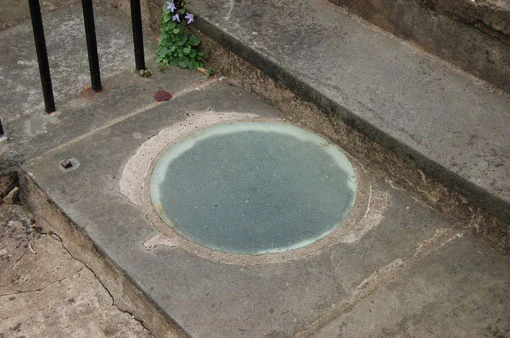
A frosted glass coalhole cover! I assume this was installed after the coalhole ceased to be in use, and is serving as a skylight for the cellar below. This house is at the end of the terrace and designed differently, with the coalhole actually set into the front steps. You can still see the outline of the outer ring which has been removed and filled in with concrete.
–

A plain and simple studded design with ventilation holes. It lacks much in the way of excitement but it is a good example of the sticking-out metal lugs which are often found on the outer ring of coalholes. Presumably the purpose of these was to stop the outer ring from rotating and coming loose once it was installed.
–

This small and plain coalplate doesn’t look very much at all, but it’s special for two reasons. One is that it belongs to 3 Priory Terrace which was once the home of the celebrated artist and lithographer George Rowe. Author of the Illustrated Cheltenham Guide of 1845 (and another edition in 1850), which is one of my standard reference books for this site, Rowe lived in this house from 1832 to 1836, presumably when it was newly built. I very much doubt he would have known this coalplate however, as it appears to be a later replacement. And one with historic significance of its own. Just about visible in the picture is the name around the outer edge: J Fisher Cheltenham.
The most likely source of this plate is the ironmonger’s shop opened in 1912 by J.C. Fisher and his wife in Pittville Street. The business thrived and expanded, largely due to the energies of Mr Fisher, who rode around the Cotswolds on horseback promoting his wares. By the 1920s the shop had become a specialist in ‘Spa’ fireplaces, and after that it moved to a builder’s yard in Swindon Road and branched out into building materials, becoming the familiar firm of Sharpe & Fisher. It eventually grew into a large chain with 38 branches across southern England and Wales. Sadly this household name was expunged in 1999 when the company was sold to rival builder’s merchant Travis Perkins, who closed the Cheltenham headquarters and swallowed up all 38 branches within itself.
So far, this is the only coalplate I’ve found with ‘Cheltenham’ badged onto it. There must be more … if you know of any, let me know!
–
This article has been greatly assisted by the book “Artistry and History Underfoot: A Study of Coalhole Covers” by Gillian Cooksey. And also by the brilliant and entertaining Faded London blog, which has a similar remit to Cheltonia (except it’s about London) and by far the best collection of British coalplate photos on the net.
